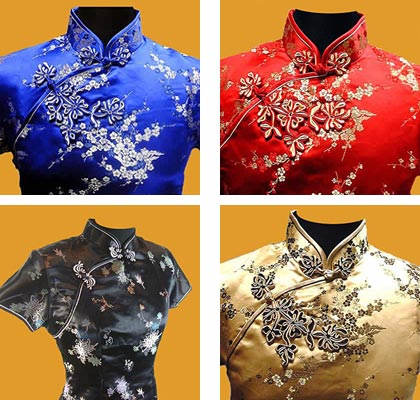
As an official dress, Qipao was usually worn in imperial court. It is
pragmatic to have a front with a tube-shaped tilted lower part which was well
suited for sitting, and to have double slits or slits on four sides which was
suited for walking, riding and archery.
During the Republic of China the
Qipao's sleeves became short, and "attached sewn-on sleeves" in the female dress
and "hoof-style sleeves" in the male dress were abolished respectively for
convenience of studying at school and doing business in society. The length of
the dress body was shortened to the ankles. Modern Qipao style has adopted
sewn-on sleeves, narrower waistline, and enlargement of slits in order to snit
prevalent fashion trends and blend Western-style characteristics. It not only
suits formal occasions, but also practical use.
The Chinese-style tailoring technique of one-piece, connected sleeves had
been adopted through past dynasties in China. For many year, this kind of smart
gown accompanied the Chinese people, old or young, male or female. A woman's
dress was without shoulder pads, and fastened belt, while a man's gown was
loose, this served the purpose of being comfortable and convenient. No wonder
why many elderly people still recall those loose styles with nostalgia. The
modern Qipao's style is simple and graceful in order to suit modern life from
the point of function as welll as looks.
There have been many changes in the Qipao's front, such as its large, tilted,
pipa shape, The right-side-buttoning front was determined by traditional beliefs
that the right is superior, and also embodies the aesthetic interest of taking
"utilization" as the practical need. It is an inevitable outcome that modern
world has shaken off the yoke of detailed decoration and complicated process and
developed towards simplicity, with common changes and additional subtle
decorations, thus fitting in well with the aesthetic needs of modern life.